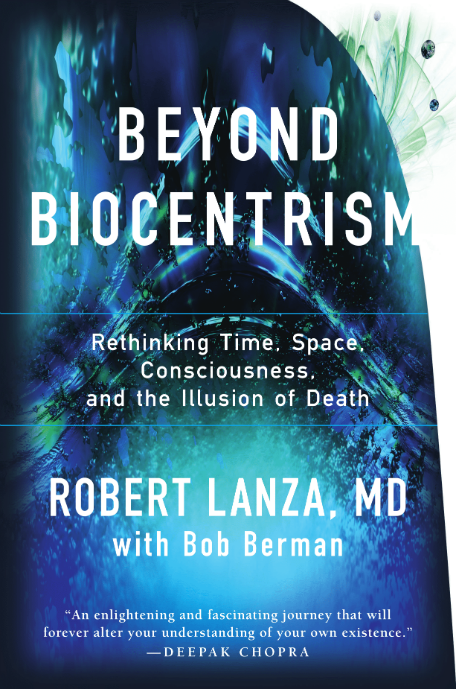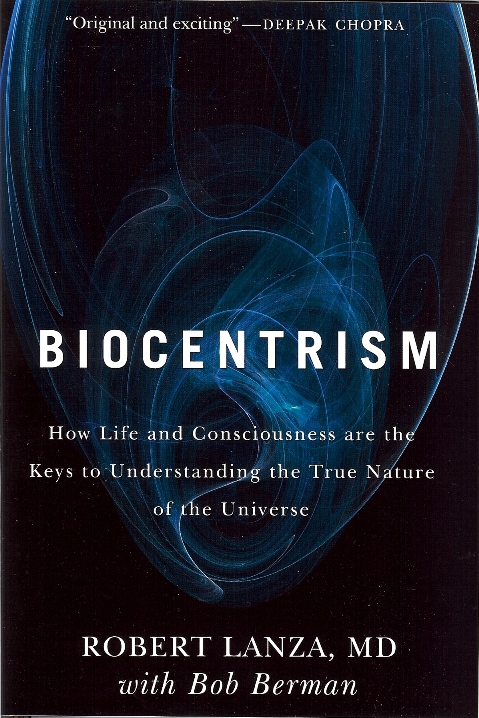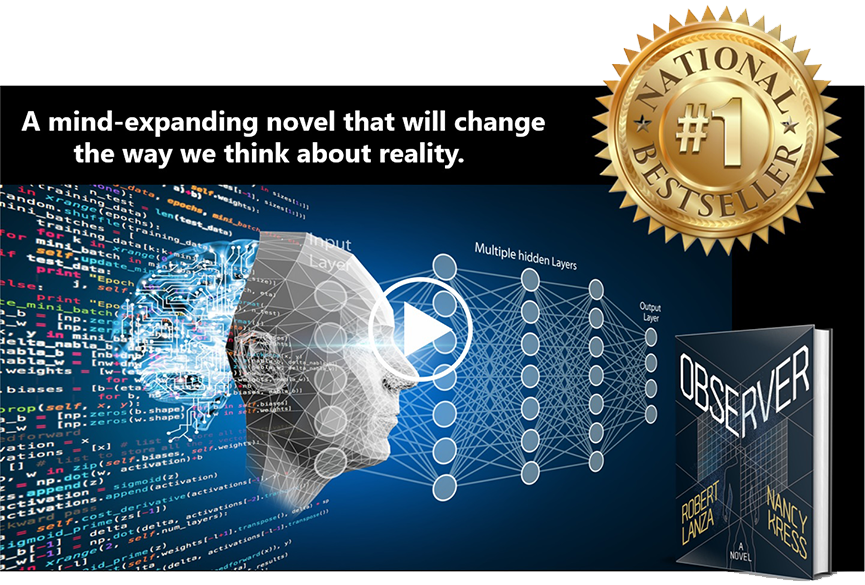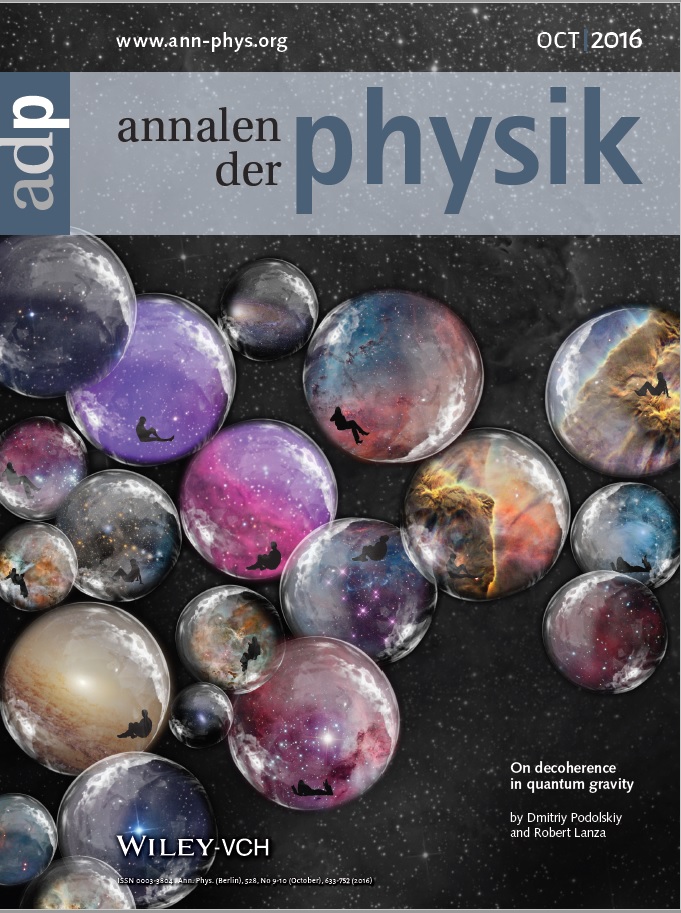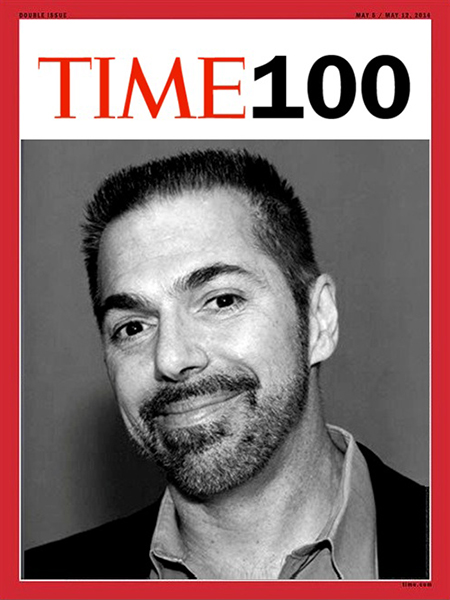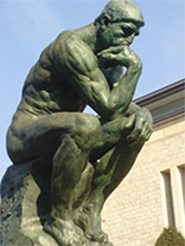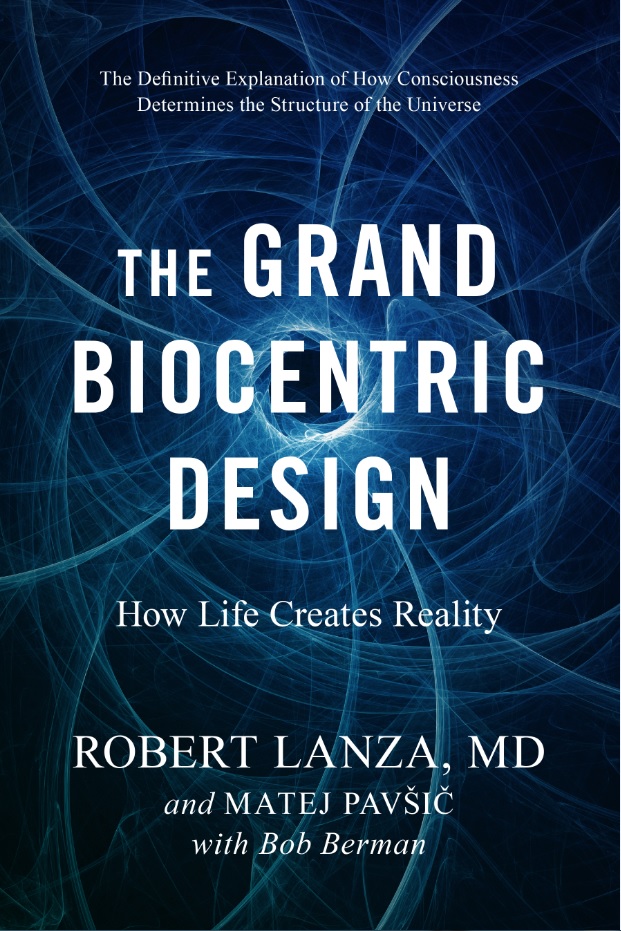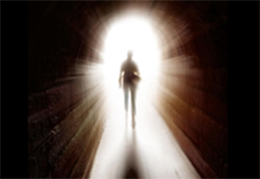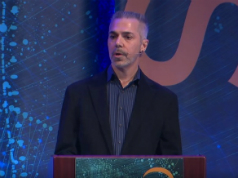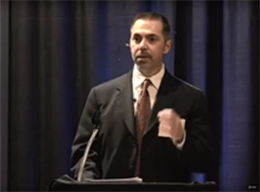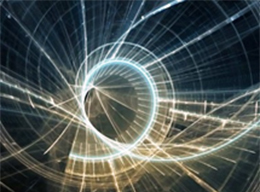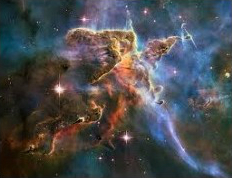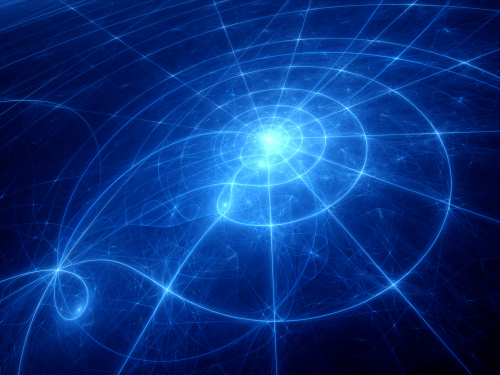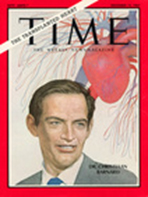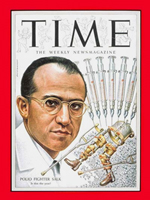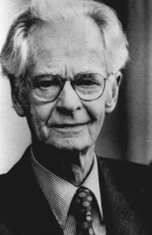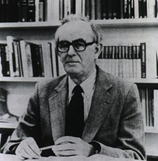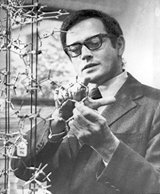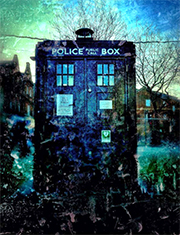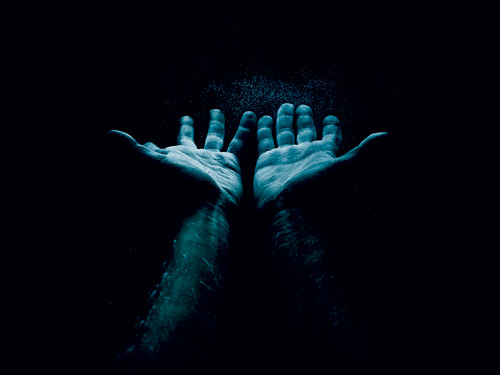
Adapted from Beyond Biocentrism: Rethinking Time, Space, Consciousness, and the Illusion of Death, by Robert Lanza with Bob Berman (BenBella Books 2016).
In the modern prevailing view of the cosmos, we sit here as tiny unimportant specks of protoplasm, flukes of nature, and stare out into an almost limitless void. Vast nameless tracts of emptiness dominate the scene. Talk about feeling small.
But what is all that supposed nothingness, that yawning lifeless gap between the stars and galaxies? Here we will provide evidence challenging the notion of a little island "me" bravely forging ahead in a vast lonely cosmos, and will demolish the modern image of insentient vastness being the dominant quality of reality.
A long string of experiments suggests that beyond the observer, no real emptiness exists. According to biocentrism, a biology-based theory of everything, "space" is largely just a sense of order created exclusively by our mind's algorithms. For all these reasons an exploration of space is important. It's also enjoyable for anyone who finds 'nothing' fascinating.
The Universe in the Palm-of-Your-Hand
The universe seems a huge virtual ball of emptiness, according to physics texts. Yet here on Earth, the richness around us is an illusion. Remove all the unoccupied space within each atom, and the entire planet would pack itself into the volume of a marble. This marble would then be a black hole, in that such density would sufficiently boost its gravitational field that its own light could not escape. It's a marble weighing six nonillion tons.
Figuring out the nature of space has obsessed humans ever since the earliest written records of Homo Bewilderus. The ancient Greeks, compulsive logicians, argued that the blank-seeming sections of the universe couldn't be empty because nothingness cannot exist. They said that for space to "be nothing" requires us to take the verb "to be" -- which means to exist -- and then negate it. Being nothing, they said, is a contradiction. It makes as much sense as saying you're walking not walking.
During the Renaissance most 18th and 19th century scientists said that light is composed of waves -- and waves require some medium through which to travel. Sound waves need air to go from a teenager's car radio to pedestrians hearing the thumping bass. The Church chanted "amen" to the "no such thing as nothing" credo: if God is omnipresent, there cannot be any vacuum. Thus the anti-nothing lobby included members of the scientific, religious, and philosophical communities. You were in the nut-job category if you were pro-vacuum. The universal stuff assumed to fill all space was first called a plenum, then an ether. Its existence was a "given" for centuries.
In 1905, Einstein settled the question with his relativity theory, which showed that light travels happily through a vacuum. Its waves are electric and magnetic pulses. Nothing need convey them. This was welcome news. It hadn't really made sense for the planets to be passing through a substance without the slightest resistance. Fashion totally swung the other way, and "nothing" pleased everyone. Even the Church was no longer anti-vacuum.
Ah, but not so fast. An entirely different aspect of emptiness changed space from logical to enigmatic. Since the late 1990s, experiments have confirmed the reality of entanglement, where two bits of light, or even clumps of material that were created together, fly off and live separate lives, but are always 'aware' of the other's status as though there was no space between them. If one is measured or observed, its twin knows this is happening instantaneously, even if the twins are on opposite sides of the galaxy. In short, space is penetrated in zero time, no matter the distance.
This strongly suggests that the gap between bodies is not real on some level. Emptiness is not what we once assumed it to be. If far-apart objects can be in simultaneous contact no matter the distance, what does this say about space or separation?
And if that weren't enough to establish a science-based connectivity between all objects no matter their apparent separation, there's more. Einstein’s relativity shows that space is not a constant and therefore not inherently substantive. High-speed travel makes intervening space dramatically shrink. Thus when we contemplate the cosmos, perhaps by gazing at the starry canopy during a camping trip, we may marvel at their distances and the universe's vast spaces. But experiments have repeatedly proven that this seeming separation between ourselves and anything else is subject to point of view — what Einstein called a "reference frame" — and therefore has no
Living Rooms the Size of a Period
Simply change your speed or ask your real estate agent to find you a nice ranch house on a world with a much stronger gravity, and you'd find that all those stars now lie at entirely different distances. If we crossed a large living room going at 99.9999999 percent of light speed, every instrument and perception would show that it's actually now barely larger than the period at the end of this sentence. Go faster and the entire universe would fit into the palm of your hand. Space would have changed to nearly nothing. Where, then, is the supposedly trustworthy space matrix, the gridwork within which we observe the universe?
Beyond all this science, none of which is doubted by any physicist, looms the issue of whether gaps or separations exist objectively, or are merely the result of our minds' process of imparting order to what we see. Remember, we sense the world because our electrical fields are encountering its. Based on these sensations alone, we perceive seeming absences or empty gaps. Thus, apparent space is part of the mental logic of the animal organism, the software that molds sensations into multidimensional objects so that we can make sense of the world and accomplish all our vital functions like searching for where we put the TV's remote.
When we think about it, most of us would probably regard space as some sort of a vast container that has no walls and that houses all visible entities. In this huge floorless warehouse lurks the appearance of a myriad of separate objects. But these gaps are mere mental constructions. When we view a waterfall, do we count the spaces between droplets as gaps, or, instead, include it as the "waterfall object"? What about the mist -- count it in, or out? So the more we ponder this, the more arbitrary becomes the notion of what is empty and what is not.
There's more. The real antinothingness news was Heisenberg's uncertainty principle, published in 1927, claims a perfect vacuum can't exist and this was seconded at the time by other theorists who argued that empty space ought to contain a weird sort of energy. It took awhile, but ultimately experimental evidence showed that "virtual particles" — things like electrons and antimatter positrons — snap, crackle, and pop out of “nothingness” everywhere all the time. Each particle typically exists for just a billionth of a trillionth of a second and then vanishes. Thus, the seemingly empty universe forever swarms with exuberant evanescent particles, like fleas jumping up and down on a hot griddle.
Physicists now believe this underlying "vacuum energy" has enormous power. Although estimates vary greatly, it's likely the space inside a mayonnaise jar contains enough power to boil away the Pacific Ocean instantly. That we visually see nothing means nothing.
Changing Our Way of Thinking
So, let's change our way of thinking of the cosmos. Biocentrism shows us that since the observer and the observed universe are correlative, the space "out there" is part of a continuum of consciousness, and nothing exists apart from the observer. In reality, the farthest regions of space are located here in our minds (Note: even in dreams, our minds generate a 3D experience, including a flesh-and-blood representation of our body, even though you may still be sleeping in bed). Space and distances mutate depending on a multitude of relativistic conditions, so that no inviolable distance exists anywhere, between anything and anything else. Quantum theory even casts serious doubt about whether even far-apart bodies are truly and fully separated, and separations between objects are often called space only because language and convention makes us draw boundaries.
Still, the mental torment imposed by the issue of space shows no sign of abating. Some scientists propose additional dimensions to space, beyond the three spatial dimensions and a fourth constituting time. There are complex, mathematically plausible arguments for extra, unseen dimensions. On the other hand, many scientists say that additional space dimensions are mere speculation, and must remain so unless some actual experimental or observational evidence comes to light.
Even back in 1781, the great philosopher Immanuel Kant wrote that “we must rid ourselves of the notion that space and time are actual qualities in things in themselves…all bodies, together with the space in which they are, must be considered nothing but mere representations in us, and exist nowhere but in our thoughts…It is our mind that processes information about the world and gives it order… our mind supplies the conditions of space and time to experience objects."
Thus, in reality, there is nothing standing between us and, say, the stars, galaxies, and other telescopic objects that appear separated from us by the unfathomable darkness of empty space.
“If we measure our individual forces against [nature’s],” said Emerson “we may easily feel as if we were the sport of an insuperable destiny. But if, instead of identifying ourselves with the work, we feel that the soul of the workman streams through us, we shall find the peace of the morning dwelling first in our hearts, and the fathomless powers of gravity and chemistry, and, over them, of life, pre-existing within us in their highest form.”
“Biocentrism” and “Beyond Biocentrism” (BenBella Books) lay out Lanza’s theory of everything.
Further Reading
—Deepak Chopra
"Beyond Biocentrism is a joyride through the history of science and cutting-edge physics, all with a very serious purpose: to find the long-overlooked connection between the conscious self and the universe around us."
—Corey Powell, ex editor-in-chief, Discover magazine
"Will machines ever achieve consciousness? Are plants aware? Is death an illusion? These are some of the big questions tackled in Beyond Biocentrism, which serves up a new, biology-based theory of everything that is as delightful to read as it is fascinating."
—Pamela Weintraub, ex editor-in-chief of OMNI Magazine
"Like "A Brief History of Time" it is indeed stimulating and brings biology into the whole. Any short statement does not do justice to such a scholarly work… Most importantly, it makes you think."
—Nobel Prize Winner E. Donnall Thomas





